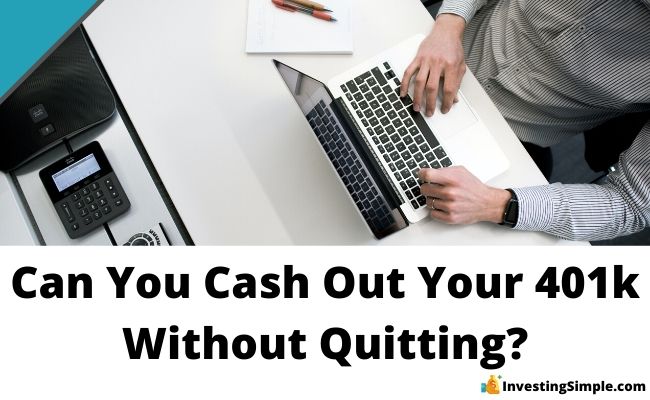





The question of whether you can get cash from your 401(k) without leaving your employer is yes, in most cases.
The actual means of doing so can vary significantly from plan to plan. When going through this process, it is important to note that an employer offering the plan (known as the plan sponsor) can choose whether or not to offer certain options like loans or in-service withdrawals, and under what conditions.
In most cases, it is specified within the plan documents what types of withdrawals or loans are permitted. Keep in mind that in-service withdrawals may also come with penalties and tax implications.
You have two primary options:
If you prefer watching instead, check out our video on this topic below!
If your plan allows them, borrowing from your 401(k) balance can be one of the easiest ways to access cash. The Internal Revenue Service (IRS) permits you to borrow up to the lesser of $50,000 or 50% of your vested account balance. This differs from some common misconceptions; it is not 5% but rather 50% of your vested amount that counts toward the limit.
Typically, you have five years to repay the loan, with payments—including interest—going back into your account. If the loan is used to purchase a primary residence, some plans may offer longer repayment terms.
Keep in mind, plan sponsors are not required to offer loans, so availability and terms can vary widely. You should check your specific plan's details or consult your plan administrator before proceeding.
Note on CARES Act provisions: Temporary provisions from the CARES Act in 2020 allowed higher loan limits and relaxed repayment rules for COVID-19-related hardships. However, these provisions have mostly expired by early 2021 and are generally no longer available unless renewed by new legislation. Be sure to verify if any current temporary relief options apply to you.
A key risk of borrowing from your 401(k) is defaulting on the loan or leaving your job before repaying it. If you default or fail to repay, the outstanding loan balance is treated as a distribution and becomes subject to regular income taxes plus a 10% early withdrawal penalty if you are younger than 59½, unless an exception applies.
Some plans allow repayment of loans after employment ends, but this depends on your plan's specific rules. Always verify your company's provisions with the plan administrator to fully understand the consequences and options.
In-service withdrawals allow participants to take money out of their 401(k) while still employed, but availability and conditions vary greatly by plan. Employers decide whether to permit this option and set eligibility requirements. Withdrawals taken prior to full retirement age will be subject to a penalty, on top of the tax owed on the distribution.
Common restrictions include: Withdrawals may only be allowed after reaching a certain age (often 59½ or sometimes 55), or for specific hardship reasons.
Eligibility can depend on reason and age. For example, some plans allow withdrawals for hardship situations or permit withdrawals after you turn 59½ without penalty. Some plans restrict in-service withdrawals to certain portions of the account, such as employer contributions or profit-sharing funds, rather than employee deferrals.
If permitted, in-service withdrawals can be an option to access funds if your current plan's investments are limited or costly. Often, you can roll over these withdrawn funds into an IRA, which offers a broader range of investment choices without immediate tax penalties.
Many brokerages can assist you in rolling over your 401(k) into an IRA.
Before pursuing an in-service withdrawal, consult your plan administrator to understand all rules and restrictions. Also, consider seeking advice from a financial advisor or tax professional to evaluate the implications.
The CARES Act temporarily allowed penalty-free withdrawals for those under age 59½ impacted by COVID-19, spreading income tax liabilities over three years and permitting repayment within that period. However, this provision expired mostly by 2021 and is not routinely available anymore. Always check for any updated relief programs that might apply in 2025.
The IRS defines a hardship withdrawal as a distribution made due to an immediate and heavy financial need, limited to the amount necessary to satisfy that need. Note that a hardship withdrawal is taxable income but typically avoids the 10% early withdrawal penalty if it meets IRS criteria.
Whether hardship withdrawals are available depends entirely on your employer's plan design. Your plan must specify qualifying reasons and any conditions for these distributions.
Keep in mind, if you take a hardship withdrawal, IRS rules require that you stop contributions to the plan for at least six months.
Accessing cash from your 401(k) while still employed is possible but often comes with significant costs such as income taxes and, possibly, early withdrawal penalties. These should be carefully weighed against the financial need. Early withdrawals can reduce your retirement savings and impact your long-term financial security.
An alternative to cashing out is rolling over a portion of your 401(k) to an IRA, which may offer broader investment choices and more flexible withdrawal options without immediate tax consequences.
Don't forget to grab your free stock worth up to $200 from Robinhood today!